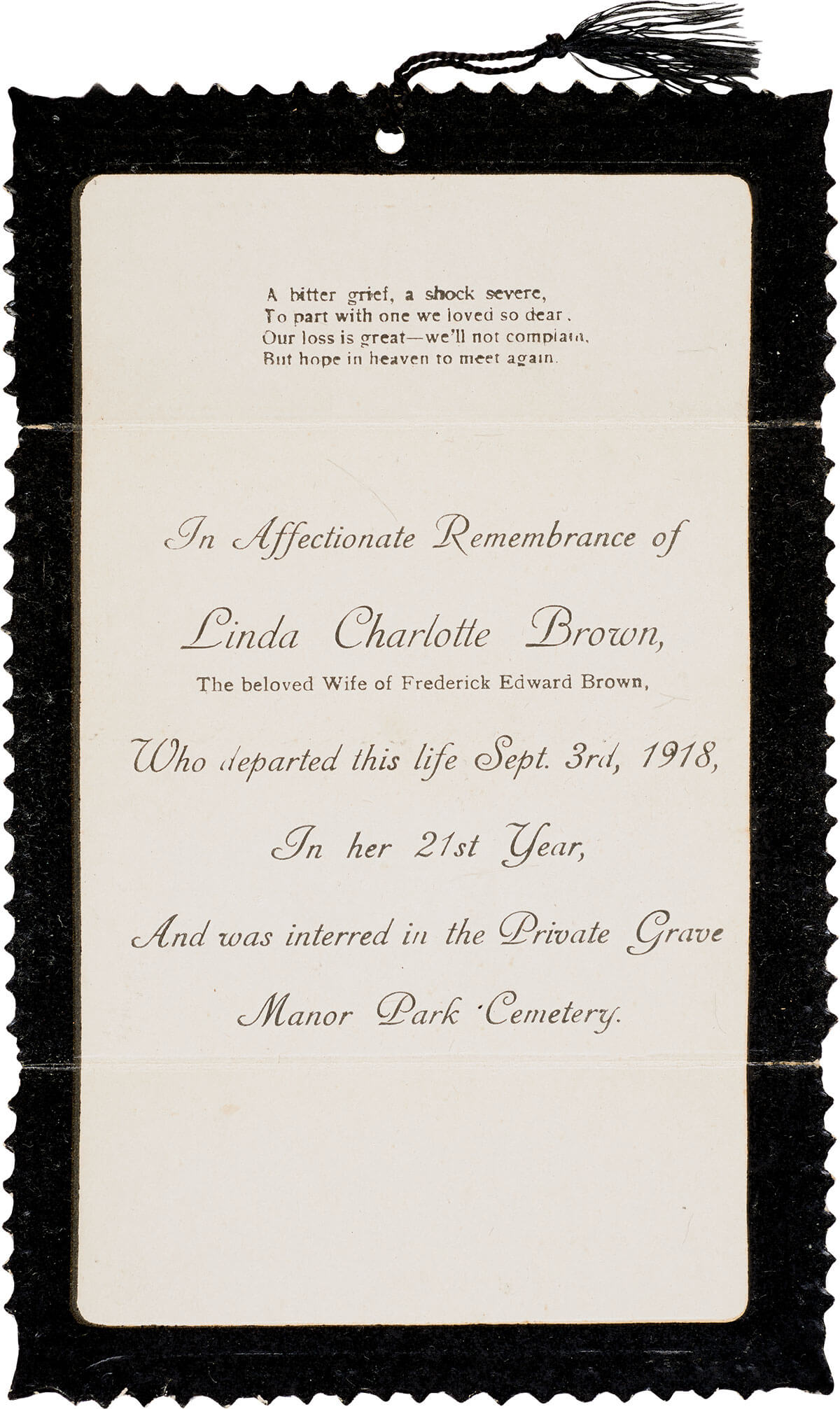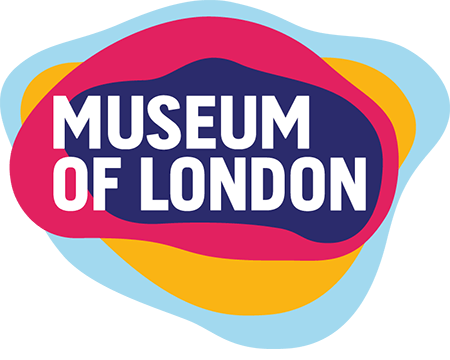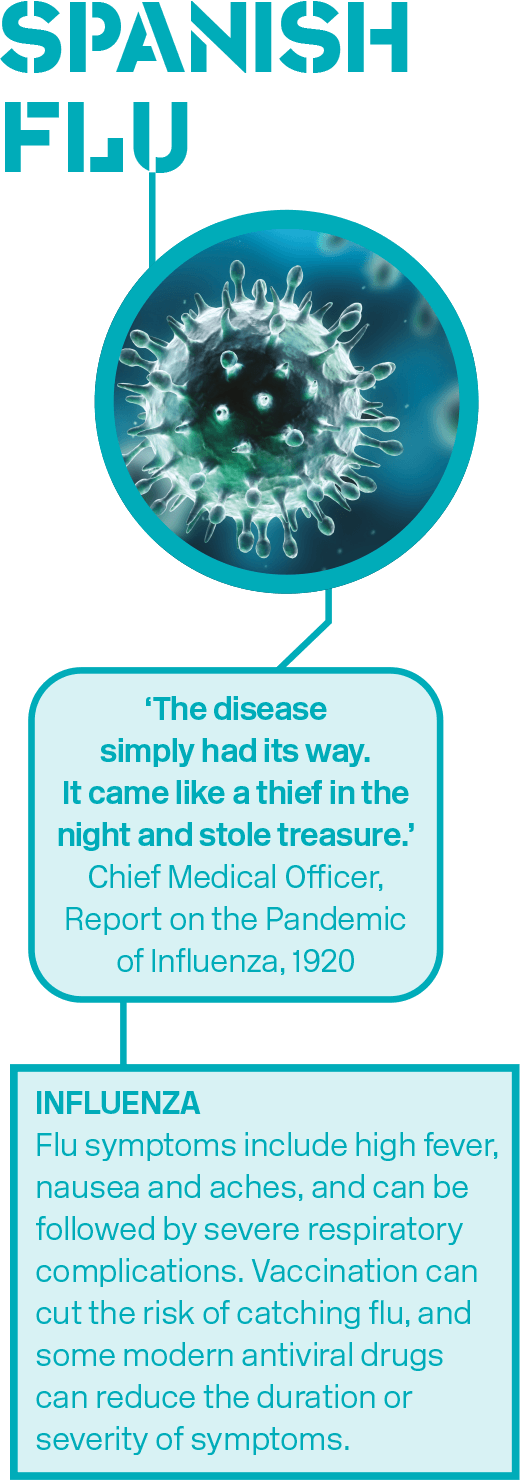
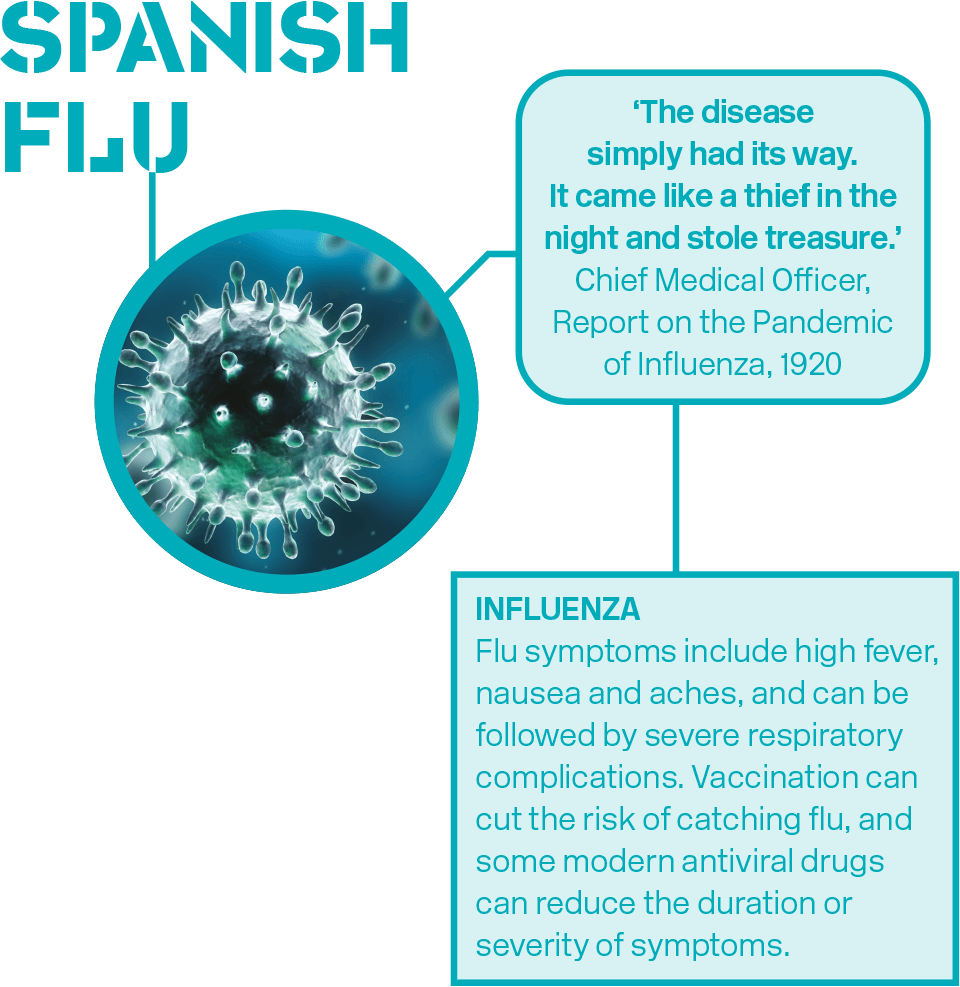
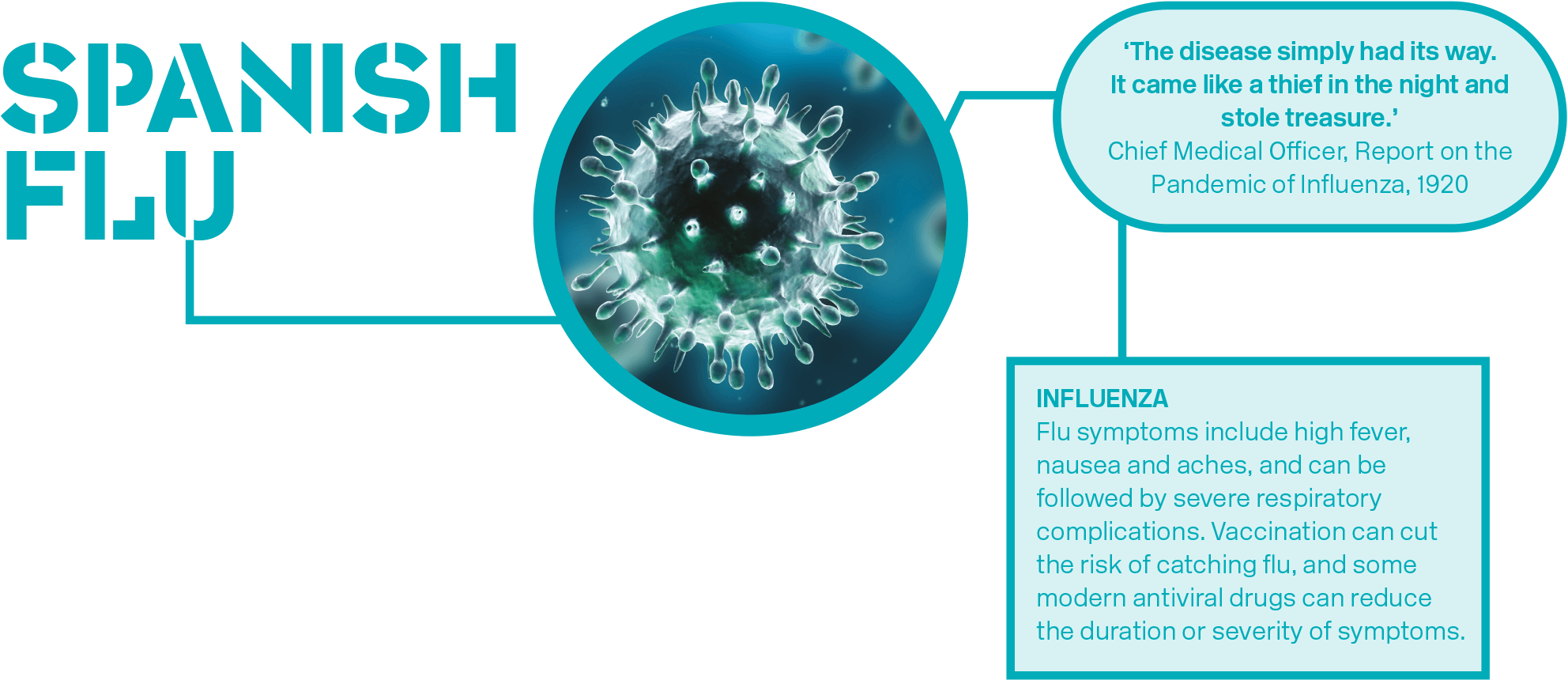

Behind every epidemic statistic is a personal tragedy.
Just over 100 years ago the worst ever outbreak of influenza took the lives of at least 50 million people worldwide. It was dubbed ‘Spanish Flu’ as wartime censorship prevented news coverage apart from in neutral Spain. Infection often led quickly to a deadly form of pneumonia. Nothing could be done to prevent or cure it.
This outbreak had an unusual pattern of deaths, killing a disproportionate number of young adults.
London was struck by three separate waves of the virus between June 1918 and April 1919, killing over 18,000 Londoners. Here we tell the stories of two of its victims.
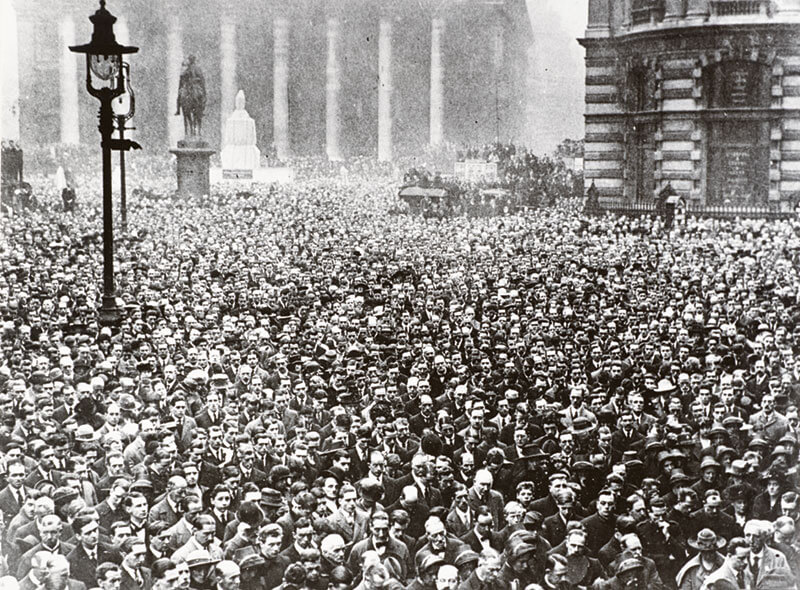
Armistice Day, Bank, London 1918
The huge gatherings of people commemorating the end of the First World War would
have been ideal breeding grounds for the flu virus.
William Leefe Robinson, VC
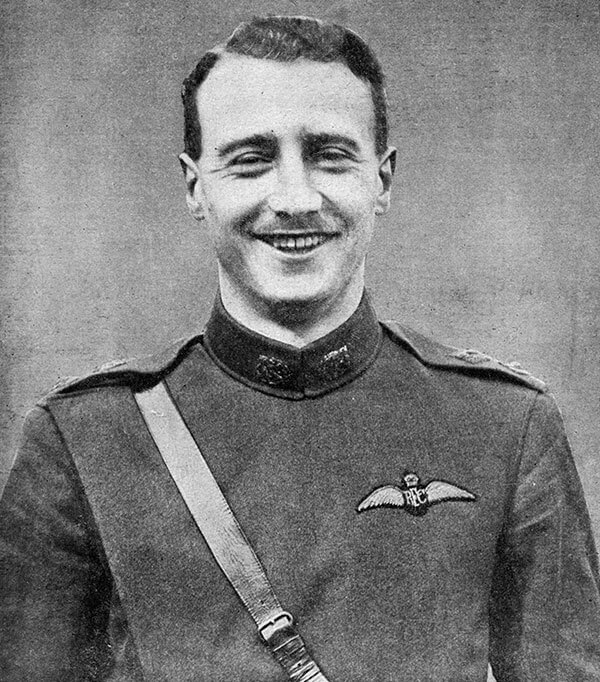
Birth: 14 July 1895, Kaimabetta Estate, India
Death: 31 December 1918, Stanmore, Middlesex
Age: 23
William was the youngest son of a coffee planter and was attached to the Royal Flying Corps. On 2 September 1916 he spotted 16 Zeppelins on their way to bomb London and brought one down by firing at the rear of the airship from below. His method helped end Zeppelin raids on London and he was awarded the Victoria Cross, the highest military honour.
In early May 1917 he was shot down in France, captured and imprisoned. He made three escape attempts but suffered ill-treatment because of them. On his release, he was able to spend Christmas with his family but succumbed to flu only a week later on New Year’s Eve.
Fall of the ‘Cuffley Zeppelin’, 1916
Charles Dixon
Dixon often produced magazine illustrations and this dramatic painting appeared as a double-page spread in the Graphic only a week after the event.
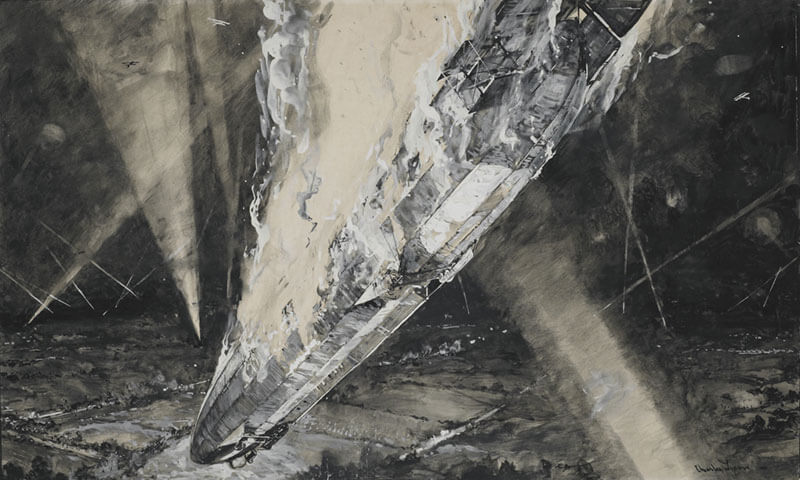
Linda Charlotte Brown, née Hale
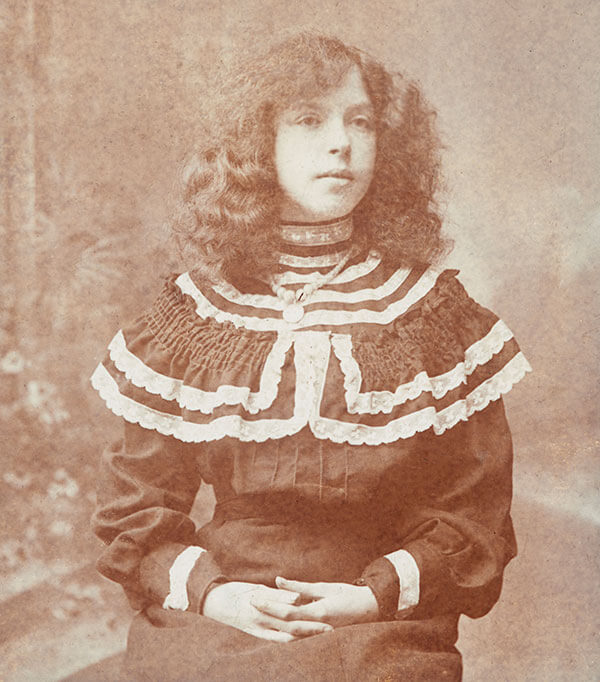
Birth: November 1896, Spitalfields, London
Death: 3 September 1918, London Hospital, London
Age: 21
Linda was the much-loved youngest child of a large East End family and grew up in a tenement block near Commercial Street. Family wedding pictures show Linda at the centre of the action, surrounded by her relatives. Linda worked as a glass blower before marrying Frederick Edward Brown, at Christchurch, Spitalfields on 22 August 1915, when she was just 18. Her husband was called up and joined the Royal Fusiliers in May 1916.
The family story is that Linda’s husband was injured in action in summer 1918 and sent to the north of England to recuperate. Linda made the long train journey north to visit him. It was on this emotional and exhausting trip that she contracted flu, and she died in the London Hospital on 3 September 1918. Her sudden death shocked the whole family.
Mourning card, 1918
Mourning cards were a way of letting the wider family know when a beloved relative died. Linda’s particularly fine example is thought to have been funded by a wealthier relative.
Lent by Beverley Cook
Listen to Museum of London Curator Beverley Cook and her mother, Mavis, talk about Linda and her death from Spanish flu.
